(Justin loves train games! For more on his series of 18XX reviews, please start with 18XX: A Beginner’s Journey.)
Almost every outlet I read, watch or listen to says it the same way: to get a sense of 18XX games, you have to start with one of the first games in the series, 1830: Railways & Robber Barons. Published in 1986, 1830 is the sequel to 1829, the first game in the 18XX system created by Francis Tresham.
1830 is still the most popular game in the 18XX series—as of December 2023, it’s still in the top 300 games on BGG’s all-time favorites list—so it made some sense to give this game a spin. What I quickly found is that 1830 is a great game, but a terrible introduction to the 18XX system.
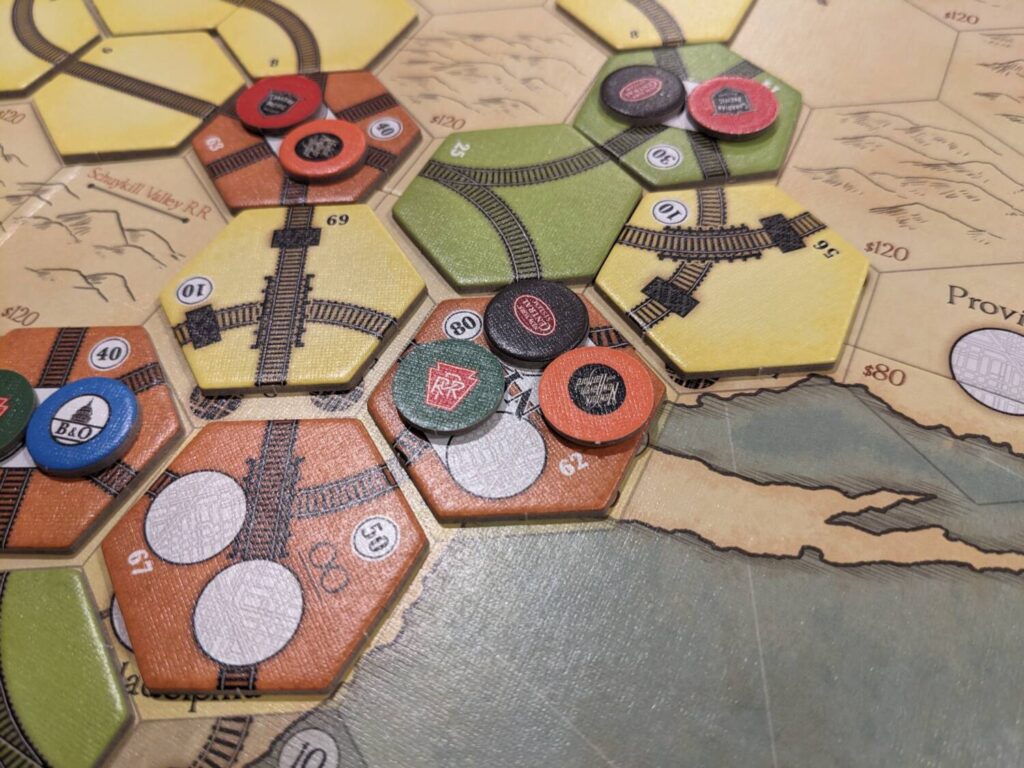
Oh, That Map
If you are new to 18XX games, please follow the links above to get a sense of how 18XX games play. I won’t cover the entire system in detail here; my 1830 review will discuss the base concepts to provide some flavor on what makes 1830 unique.
1830, like other 18XX games, positions 2-6 players as rival entrepreneurs in the nascent railroad business of the early 19th century. The winner of a game of 1830 is the wealthiest player, a combination of personal cash on hand and the value of their stock portfolio. There are stock rounds, operating rounds, and market manipulation as players try to earn as much money as possible while managing or investing in the game’s most profitable railroad corporations.
What makes 1830 interesting is the map. A section of the northeast US (and parts of Canada) makes up the majority of the 1830 tile area, with Chicago and the “Gulf” taking up the western-most available hexes. There are always the same eight major corporations in the game, familiar companies like the Chesapeake & Ohio, the Pennsylvania Railroad Corporation, and the New York Central Railroad. They are joined by a couple of smaller corporations, such as the Boston & Maine and the New York, New Haven and Hartford (NYNH) corporations, so that players can choose to run a behemoth with more station tokens or a smaller business with only a couple of tokens to spread across the map.
The 1830 map is so deceptive. Even though I’ve played 1830 four times (three of those plays coming via the 18xx.games website), each game has truly been unique based on what region of the map I have chosen for my first company. Two of the companies must start in hexes that seem like places you really should NOT start: the starting location for the B&M, and the Canadian Pacific Railroad (a railroad that, even by the admission of the rulebook, is not very interesting as a place to begin play). That’s because they are so isolated from the other major corporations. This, mixed with a lack of private companies that benefit these locations, make some entities seem like a stretch for a novice player.
1830’s gameplay is the basis for almost every other 18XX game I have played, so it’s fun to think about how this map affected so many others. The first major thing I see that makes a huge gameplay difference is the number of tiles that can be laid or upgraded on a turn: one. This means that 1830 is a really slow burn. The map is fairly large but players can’t make a dent in its landscape for much of the game. Combined with a massive bank to begin play, this means that games of 1830 are quite long.
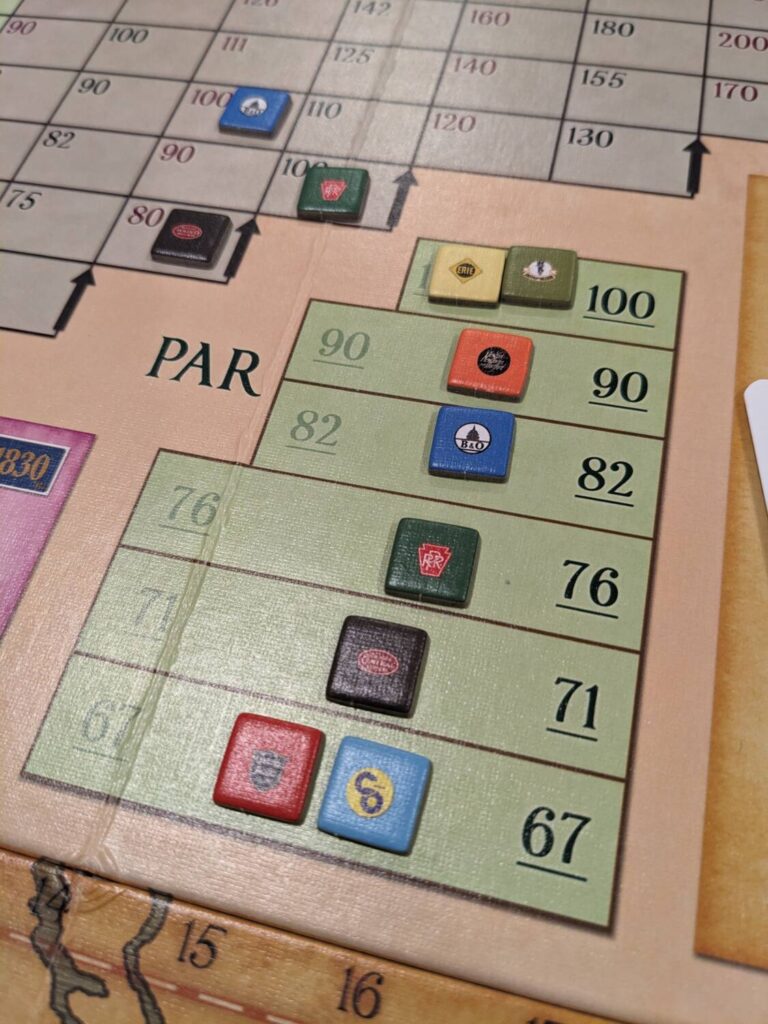
The map also does something that has been updated in other 18XX games: towns are limited to yellow tiles only. This means that when a player decides on what direction a yellow track runs through a town (towns are small dots on the map, and are worth $10 as a stop on any line), that locks up that tile’s scope for the rest of the game. Almost every “modern” 18XX game that I have tried—1861, 1880: China, 18MS, 18New England—allows for upgrading town tiles to green or brown tiles with multiple exit points, so that towns can be used to pivot in different directions that ultimately benefit all players.
Not so in 1830. I’ve used this to my advantage and also gotten hosed by opponents with yellow town tiles, when they set a direction with a town tile that effectively blocks the path of a competing railroad.
1830 doesn’t have gray tiles, so each tile can only be redeveloped twice (yellow to green, then green to brown) instead of three times. This can drastically change the scope of a game when players try to turn a tile in a direction that kills off a route for another railroad by turning a tile from green to brown for the benefit of only one or two companies when more could have used the same route.
The NYC-DC-Baltimore corridor is such a warzone on the 1830 map. Watching the players who are running the Baltimore & Ohio, PRR, NYNH, and NYC fight over the tight space here is always crucial. Baltimore only has one space for a token regardless of tile color (and it’s a valuable location, topping out at $60 for the B&O player and anyone who can connect to this tile) and New York City eventually becomes an $80 tile that can be visited twice with routes that enter and exit from different points, if the station spaces there remain open.
The 1830 map is probably its main selling point. Navigating the middle of it, particularly the northern midpoint where Erie’s first token is dropped and mountains cut off some of the tiles on either side, is also a big consideration when trying to build through that area. Wrapping track around the western end of the map, or trying to spend enough cash to get through the $120 mountain spaces—easily the most expensive tile lay of any 18XX game I have played—is an adventure, and not an adventure for the weak.
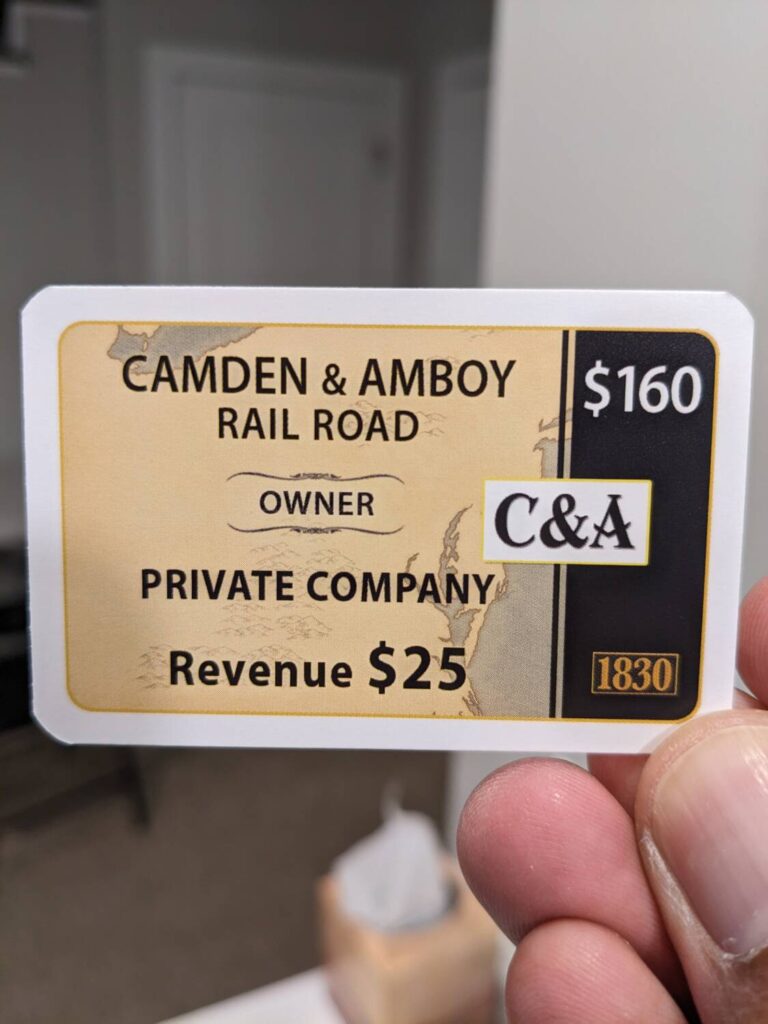
Where Does 1830 Miss?
Personally, I think 1830 is vanilla ice cream. It’s strong, but I still think 1830 is the least interesting of the 18XX games I have tried.
That’s because 1830 really does serve as the core game that every other 18XX game has been building off of, for nearly 40 years. The private companies in 1830 are fairly bland. One of them has no special powers and a $5 revenue each operating round; meh. Another private is basically the acquisition of the B&O Railroad. Two of the privates offer revenue and a free share of either PRR or NYC; valuable, but not very spicy.
A couple of the privates have interesting rules around tile lays (and in the case of the Delaware & Hudson, a “free” token placement after you pay for the $120 mountain hex fee) and decent revenue, anywhere from $15-$20. But none of the privates in 1830 compare to the privates in 1846: The Race for the Midwest, which are situationally more interesting, provide higher revenues and/or the chance to operate minor/independent railroads.
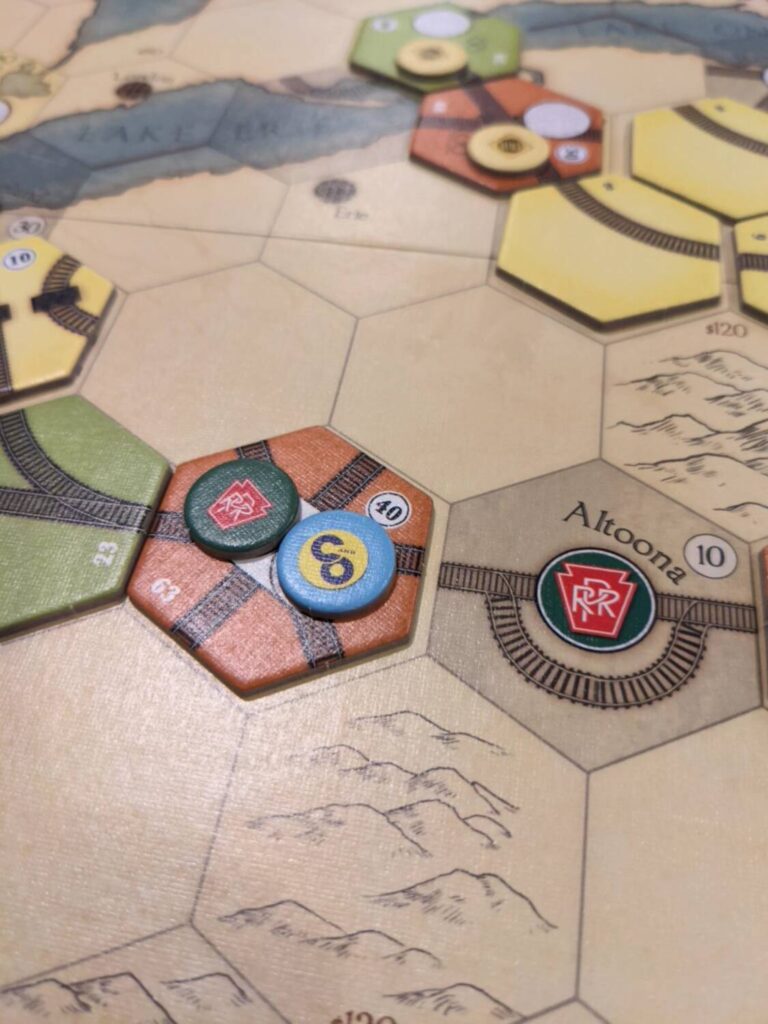
Most importantly, the privates in 1830 are acquired via auction, which can really leave a new player in a difficult place if they overbid then win too many privates without understanding the value of those choices. I was obliterated in my first play after buying two privates at a price that proved too high. That left me unable to operate my own railroad until the second set of operating rounds, which can be a death knell in 1830.
The trains in 1830 are standard fare. Trains that hit 2-6 stations cost anywhere from $80 to $630, prices that have become the standard bearer in other 18XX games and for good reason. However, there are no “plus” trains in 1830. In other games, a 3+ train could visit three cities and one town, for example. That means that trains in 1830 stop at towns as opposed to running through towns, unless a diesel train runs the route.
Ahh, diesels. 1830 was one of the first 18XX games I played that had diesel engine trains. Diesels, or “Ds”, can hit an unlimited number of connected and unblocked stops on a single run. That means that late in a game of 1830, your D trains will likely hit 10+ stops and earn a ton of cash. It’s a blast to watch your Ds gobble up $500, $600, $800+ on a single run, and if a player has a diesel that runs through multiple major cities, that player is likely to have the inside track to a win.
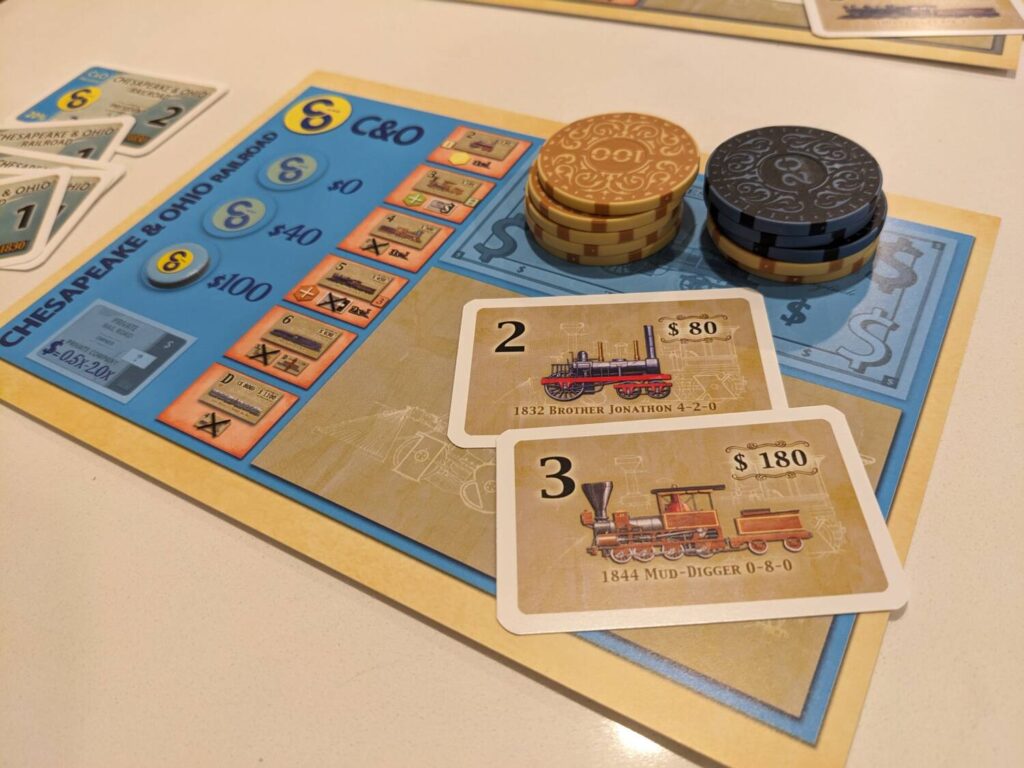
Play 1830, But Don’t Start There!
1830 is fantastic. For the obvious reason that it was the first major 18XX title, 1830’s mechanics are widely used in every other 18XX game I have played, which include 1846, 1882, Shikoku 1889, 1848, 1880: China, 1861, 1822MEX, 18New England, 18Chesapeake, 18Mag, and 18MS.
Broadly, this means that if you’ve played 1830, you should only need to read a couple pages’ worth of rules to play any other 18XX game. That’s a big help in a system where every game shares similar bones but makes tweaks in certain areas to change up the meta.

My only major beef with 1830 is not even the game’s fault: many people believe that 1830 is a great place to start. (18xx.games does not, however; they suggest starting with games like 18MS, 18Chesapeake, or Shikoku 1889 instead.) Now that I have a few plays under my belt, I can confirm that 1830 is not a great game for 18XX novices. Understanding the consequences of early-game choices is nearly impossible in 1830. Overbidding on privates is a very likely outcome as well.
Even the choice of major corporations in 1830 is a challenge. Starting anywhere on the north or eastern sections of the map could be trouble, as new players chew up all of their money to lay track through treacherous/expensive mountain terrain without the benefit of shared infrastructure. 1830 is a grinder for a new player and I will never recommend it for a person who has never played an 18XX game.
For an experienced player, 1830 is still a classic and a game that seems to be aging just fine as 18XX games move into their fifth or sixth decade. The physical game can be found for about $60 online and I think it’s a worthy game to have in your collection if you can find a group willing to invest in multiple plays of a game that is being modeled and tweaked a few times every year.












I am really going to have to try some of these 18xx games.
🙂
Sorry to reply to your post, the “click here to post a comment” doesn’t seem to be working for me!
Justin – what’s your opinion on the graphic redesign of the track/board? Long-time 18xx players all complain a LOT about how it makes everything harder to see, but I’m wondering if a player relatively new to 18xx, like yourself, finds the complaints overblown, or valid. (Maybe you haven’t played the original 1830 board, but most 18xx’s have old-school looking track so you can still compare)